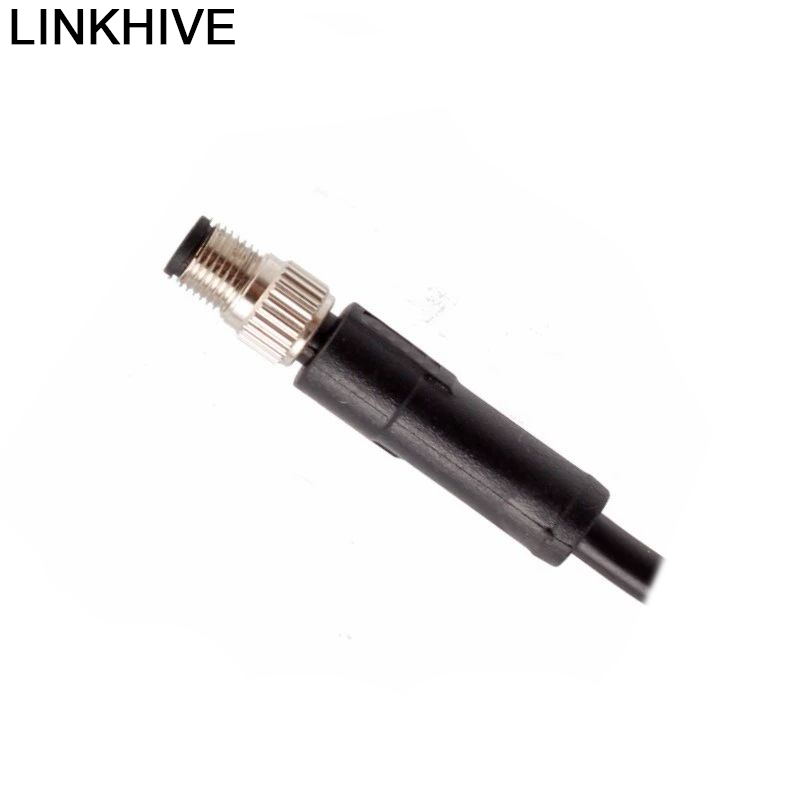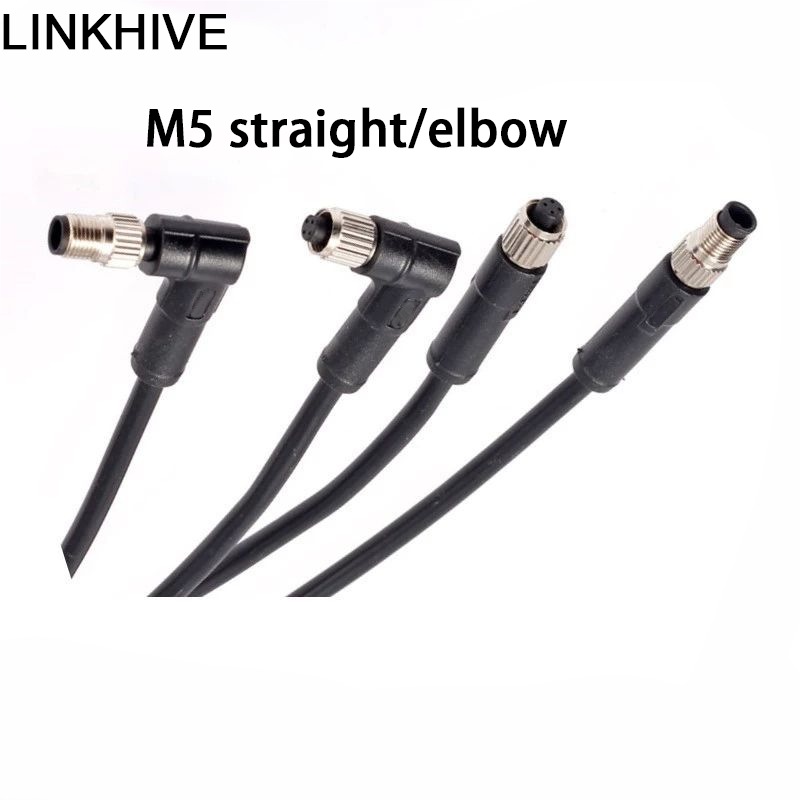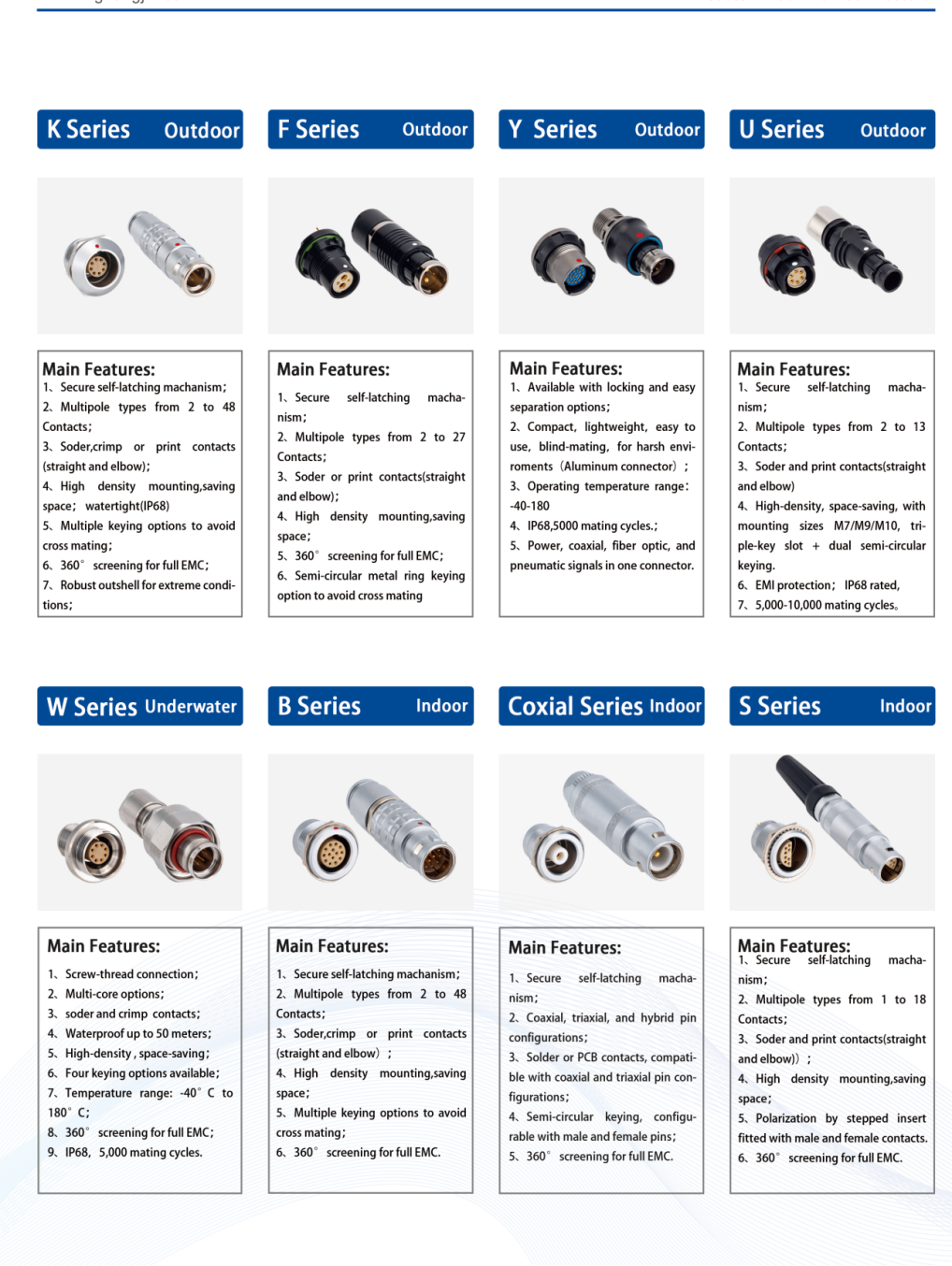A 3-pin connector is a common electrical connection component that is used to connect and transmit power, signals or data. Usually, the number of pins of a connector is related to the requirements of its application. The 3-pin connector is one of the standardized designs and is widely used in various electronic devices. As an important part of electronic components, the function and role of the 3-pin connector are very critical, especially in power systems and signal processing systems.
Compared with other types of connectors, the 3-pin connector is simple and effective in design. It has three pins, usually including positive, negative and ground or signal transmission channels. Despite its simple design, the 3-pin connector can play an important role in complex electrical and electronic systems, ensuring the smooth transmission of electrical signals and the normal operation of equipment.
This article will introduce the construction principle, types, characteristics and functions of the 3-pin connector in different scenarios in detail, to help readers have a deep understanding of the working principle and advantages of this common connector.

Construction and working principle of 3-pin connector
1. Basic construction of 3-pin connector
The 3-pin connector consists of the following basic parts:
● Pin: The main part of the connector, usually including three metal pins, used for electrical connection. Each pin is precision machined to ensure connection stability and durability.
● Positive pin: transmits positive power supply voltage.
● Negative pin: transmits negative power supply voltage or return current.
● Ground or signal pin: used for grounding or data/signal transmission.
● Shell: The shell plays a protective role and is usually made of metal or plastic materials. The design of the shell ensures the structural integrity of the connector and prevents external interference, physical damage or short circuit.
● Contact point: The pins and shell of the 3-pin connector are usually equipped with high-quality contact points to ensure the stability of electrical transmission and low contact resistance.
● Insulation layer: In order to avoid electrical short circuits, there is usually an insulation layer between each pin and the shell of the 3-pin connector, usually using high-quality plastic or ceramic materials.
2. Working principle
The working principle of the 3-pin connector mainly relies on the conductive pins inside it, which provide electrical transmission through precision contact. Signals or power are transmitted through each pin, where the positive and negative poles provide power supply voltage, and the ground or signal pins ensure stable operation of the device or signal transmission.
After the power is turned on, the 3-pin connector provides a stable electrical connection through its pins to ensure that the current can flow smoothly. Through careful design, the connector can prevent interference of electrical signals or current leakage, thereby ensuring the electrical stability of the device.

What are the types of 3-pin connectors?
There are many types of 3-pin connectors. Because they are widely used in the electronic and electrical fields, their design and materials vary depending on the usage scenario. The following are several common types of 3-pin connectors:
1. Circular 3-pin connector
The circular 3-pin connector is the most common type. It is usually used in audio, video equipment, and control systems. The design of the circular connector can effectively prevent signal interference while maintaining good mechanical strength. It is usually circular in shape and equipped with standard 3 pins, which is suitable for most common electronic applications.
2. Right-angle 3-pin connector
The right-angle 3-pin connector is another common design. Its connection port is at right angles to the connection direction of the wire. This design can provide more flexible space utilization, especially for scenarios with limited installation space. The right-angle 3-pin connector is often used in embedded devices and control systems, which can effectively save space and ensure signal transmission.
3. Locking 3-pin connector
The 3-pin connector with a locking design is equipped with a locking mechanism to ensure that the connector will not accidentally fall off during operation. This type of connector is particularly common in high-speed and high-vibration working environments. The locking device ensures the stability of the connection so that the electrical transmission is not disturbed by external interference.
4. Waterproof 3-pin connector
The waterproof 3-pin connector adopts a sealed design to effectively prevent the ingress of water, dust and other liquids. Waterproof connectors are widely used in outdoor, marine, automotive and other extreme environments. The waterproof function allows the connector to maintain stable operation in harsh environments.
5. Printed Circuit Board (PCB) Socket 3-pin Connector
This connector is designed for devices that are directly connected to a printed circuit board (PCB). Usually, the pins of this type of 3-pin connector are directly soldered to the circuit board to ensure a stable electrical connection. This type of connector is widely used for internal connections of electronic equipment, especially in industrial automation equipment, medical equipment and other fields.

What are the characteristics of 3-pin connectors?
1. Simple and reliable
The structure of the 3-pin connector is relatively simple, and due to the small number of pins, it is relatively easy to manufacture and maintain. It is widely used in applications that do not require excessive power support or signal transmission systems. With its simple design, it can provide highly reliable electrical connections.
2. Versatility
The 3-pin connector can not only carry power, but also be used for signal transmission. Different types of 3-pin connectors have different functions. In addition to power and grounding, a pin may be dedicated to transmitting signals. Therefore, the 3-pin connector is versatile and adapts to many different application scenarios.
3. Compact
The design of 3-pin connectors is usually very compact, which can provide efficient connection in a limited space. Especially in devices that need to save space, the advantages of 3-pin connectors are particularly prominent, such as small sensors, embedded systems, instruments, etc.
4. Strong durability
The shell material of 3-pin connectors is usually made of metal or high-strength plastic, which has excellent durability. Under normal working conditions, they can withstand multiple plugging and unplugging, and can also maintain high stability in vibration and shock environments.
5. Compatibility
The 3-pin connector is compatible with various industrial standards and can adapt to terminal blocks and plugs of different specifications. Its wide compatibility enables the 3-pin connector to be used in many different devices and systems, including but not limited to electronic devices, automation equipment, sensor systems, etc.

How to choose the right 3-pin connector?
There are many factors to consider when choosing the right 3-pin connector. Here are a few key selection criteria:
1. Electrical performance requirements: Choose the right connector based on the voltage, current, and signal transmission requirements of the application. Different 3-pin connectors have different rated voltages and current capacities. When choosing, make sure that they can meet the electrical load requirements of the device.
2. Environmental requirements: For applications in special environments (such as moisture, dust, or high temperature), you should choose a connector with strong characteristics such as waterproof, dustproof, or high temperature resistance.
3. Size and installation space: When choosing a connector, you need to consider the installation space inside the device. 3-pin connectors usually come in a variety of sizes and designs, and users need to choose the type that best suits the device size and installation requirements.
4. Number of plugging and unplugging: Some application scenarios require frequent plugging and unplugging of connectors. In this case, it is very important to choose a connector with high durability, especially a type that can withstand multiple plugging and unplugging.
LINKHIVE is a leading connector factory in China, offering over 2,000 high-quality connector solutions and cable assemblies. With over 10 years of innovation, we specialize in customized and wholesale connectors, including push-pull connectors, aviation connectors, and hybrid connectors. Our manufacturer expertise ensures compliance with strict industry standards such as GJB9001C-2019 and ISO9001:2015. Whether you need connectors for medical devices, telecom systems, or automotive applications, we provide discounts and low-price solutions. Contact us today for purchasing details, quotes, and the latest sales promotions.


